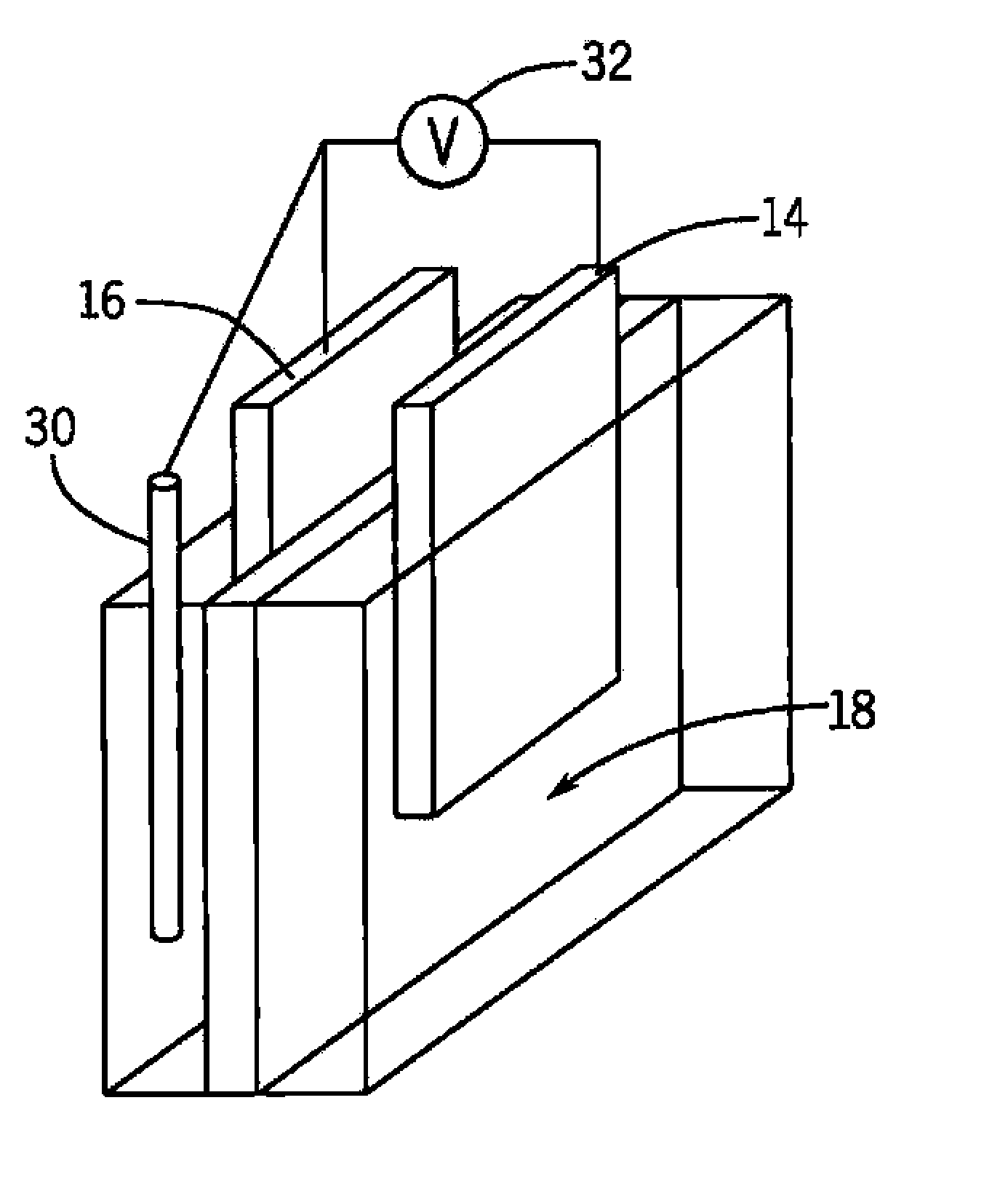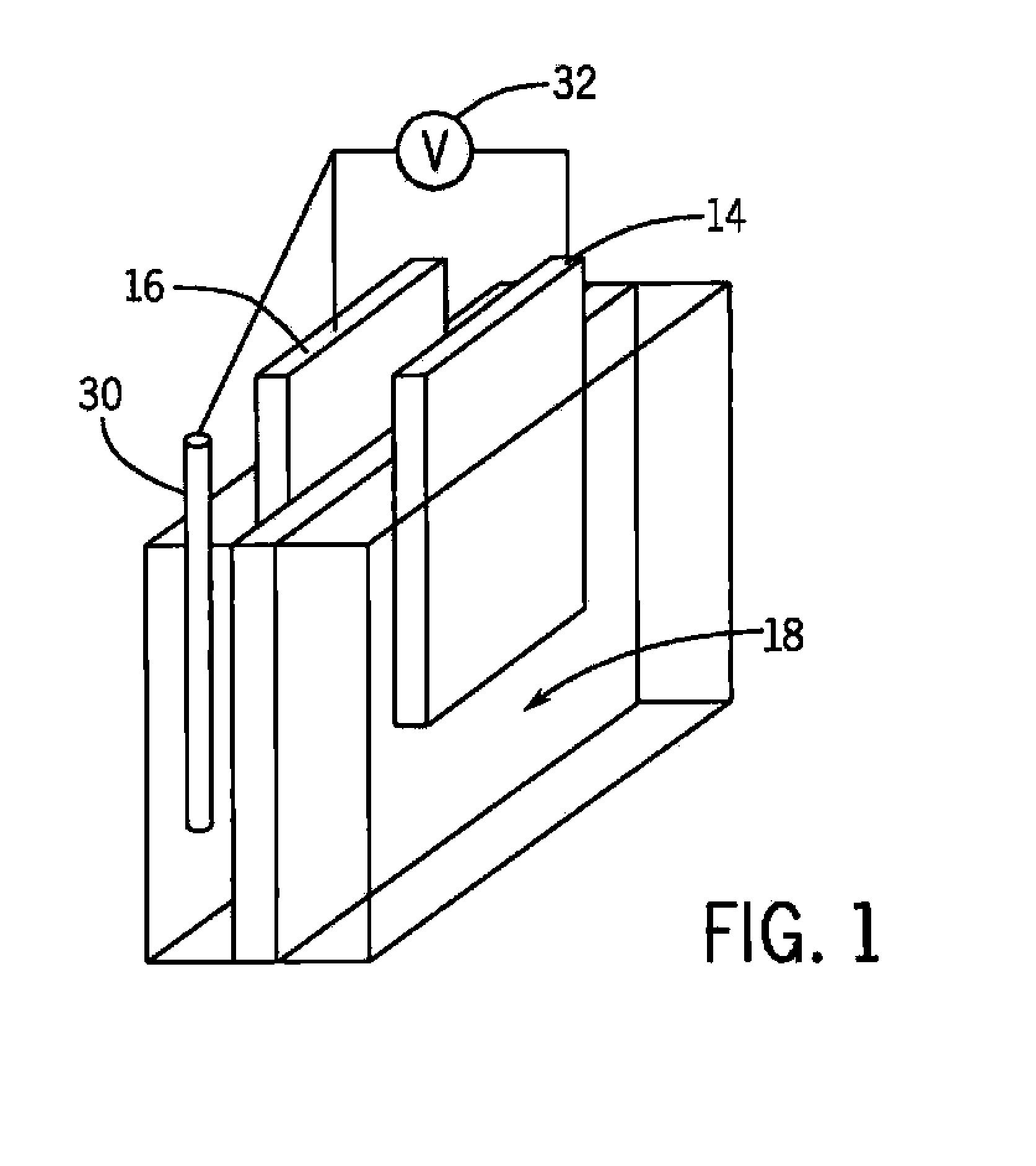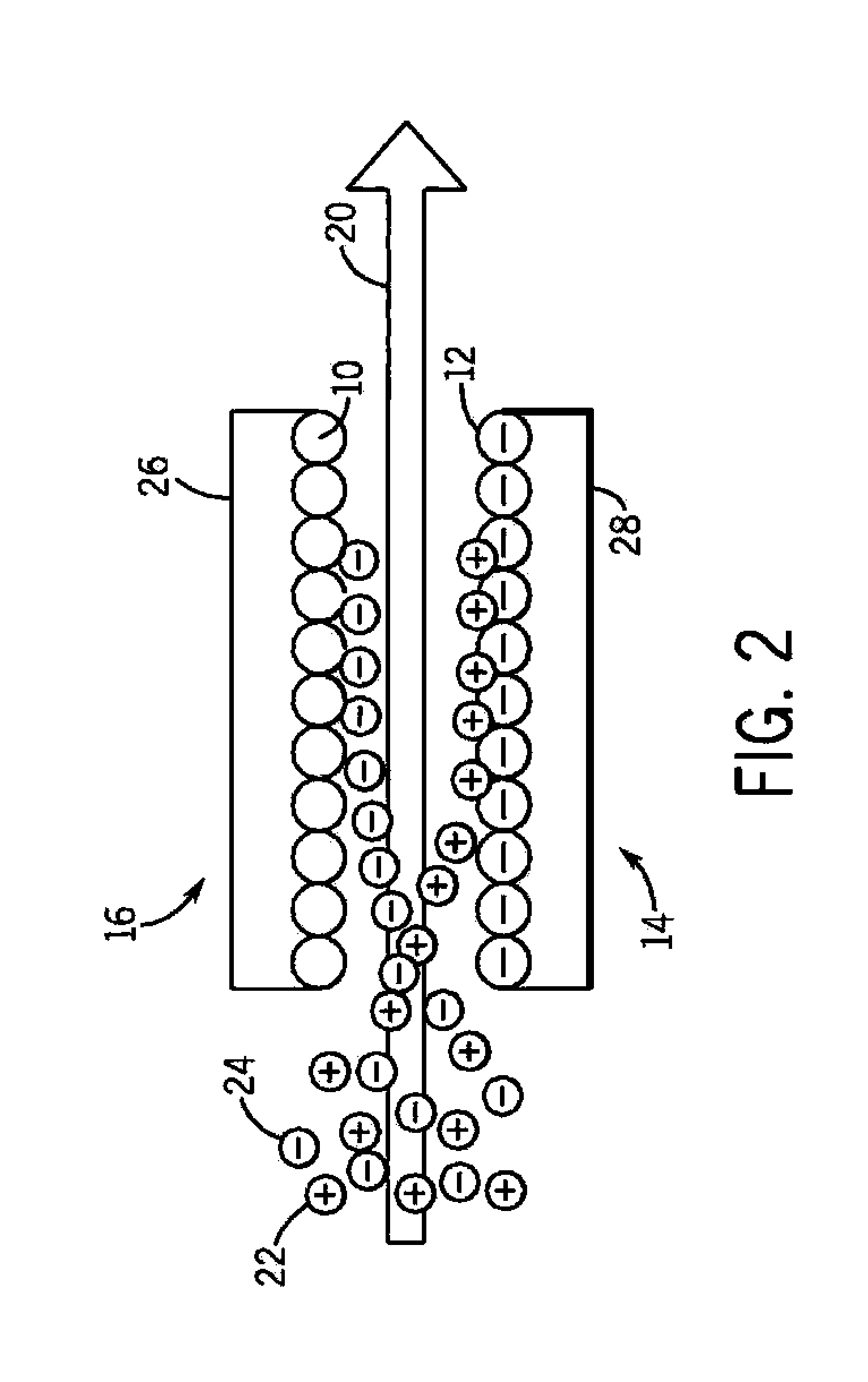Nanoporous Insulating oxide Deionization Device Having Electrolyte Membrane, and Method of Manufacture and Use Thereof
a technology of insulating oxide and electrolyte, which is applied in the direction of disinfection, construction, crystal growth process, etc., can solve the problems of unproved electrodes, metal oxides may be more costly than insulating oxides, and the need for electrodes is long felt, so as to prevent electrode shorting
- Summary
- Abstract
- Description
- Claims
- Application Information
AI Technical Summary
Benefits of technology
Problems solved by technology
Method used
Image
Examples
examples
[0071]Sol-gel chemistry techniques were used to synthesize sols containing nanoparticles of insulating oxides. The precursor to nanoporous MgAl2O4 was made using sol-gel chemistry techniques. 2.0M aluminum tri-sec-butoxide (ATSB) in 2-butanol was added to distilled / purified water at 80-85° C. in a 3.1:1 volumetric ratio of water to 2.0M ATSB. The solution was stirred for 1-2 hours. 1.6 M nitric acid was added in a 0.068:1 volumetric ratio of nitric acid to 2.0M ATSB and stirred for an additional hour. The liquid was refluxed for four hours to remove excess 2-butanol. The suspension was cooled and filtered through a series of filters, whereby the smallest was a 0.45μ membrane. The average particle diameter of the particles was approximately 20 nanometers and the isoelectric pH was approximately 9 pH units. The precursor was finalized by adding magnesium nitrate in a molar ratio of 0.2:1 Mg to Al yielding a mixture of Al2O3 and MgAl2O4 particles in a molar ratio of 0.4:1 MgAl2O4:Al2O3...
PUM
| Property | Measurement | Unit |
|---|---|---|
| Temperature | aaaaa | aaaaa |
| Temperature | aaaaa | aaaaa |
| Fraction | aaaaa | aaaaa |
Abstract
Description
Claims
Application Information
 Login to View More
Login to View More - R&D
- Intellectual Property
- Life Sciences
- Materials
- Tech Scout
- Unparalleled Data Quality
- Higher Quality Content
- 60% Fewer Hallucinations
Browse by: Latest US Patents, China's latest patents, Technical Efficacy Thesaurus, Application Domain, Technology Topic, Popular Technical Reports.
© 2025 PatSnap. All rights reserved.Legal|Privacy policy|Modern Slavery Act Transparency Statement|Sitemap|About US| Contact US: help@patsnap.com



